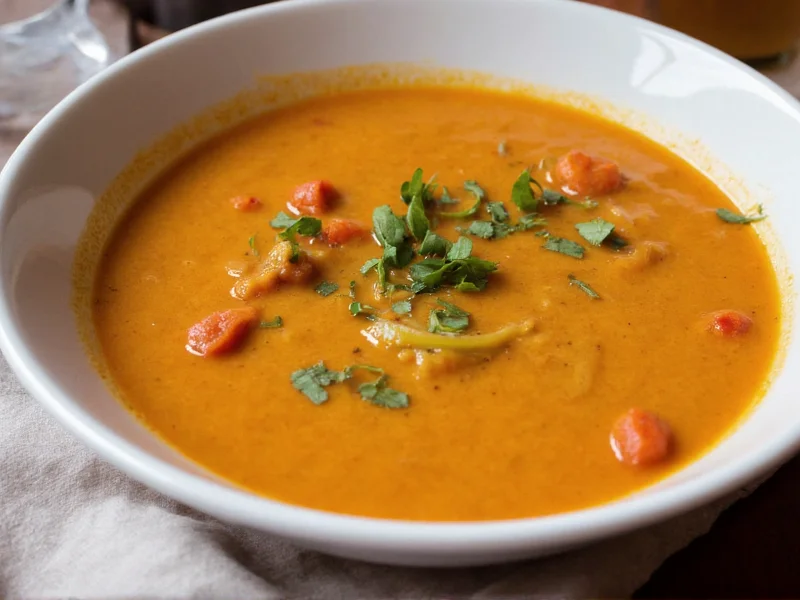Spanish cuisine features an impressive variety of soups that serve as both everyday comfort food and celebratory dishes. Unlike many European soup traditions, Spanish soups often incorporate fresh produce, legumes, and bread in distinctive preparations that vary dramatically across the country's 17 autonomous communities. The Mediterranean climate and diverse geography have shaped these regional specialties, creating a soup culture that ranges from chilled summer refreshments to hearty winter stews.
Historical Roots of Spanish Soups
Spain's soup heritage traces back to ancient Roman and Moorish influences. The Romans introduced the concept of olla, a one-pot meal that evolved into modern Spanish stews. During the Moorish occupation (711-1492), ingredients like almonds, saffron, and spices transformed local cooking. The discovery of the Americas brought tomatoes, peppers, and potatoes, which became foundational to many traditional Spanish soups we know today.
Regional Soup Specialties Across Spain
Each Spanish region boasts distinctive soup traditions reflecting local agriculture and historical influences. Understanding these regional differences reveals the true diversity of authentic Spanish soup recipes.
| Region | Signature Soup | Key Ingredients | Seasonality |
|---|---|---|---|
| Andalusia | Gazpacho | Tomatoes, cucumber, bell peppers, garlic, olive oil | Summer |
| Madrid | Cocido Madrileño | Chickpeas, meats, vegetables, morcilla | Winter |
| Galicia | Caldo Gallego | Kale, white beans, chorizo, potatoes | Year-round |
| Castile | Sopa de Ajo | Garlic, paprika, bread, eggs | Winter |
| Catalonia | Sopa de Xulla | Fish stock, garlic, almonds, saffron | Winter |
Iconic Spanish Soups Explained
Gazpacho: Spain's Famous Cold Soup
Originating in Andalusia, gazpacho represents one of Spain's most internationally recognized traditional Spanish soups. This chilled tomato-based soup contains no bread despite common misconceptions. Authentic gazpacho preparation involves pounding ingredients in a mortar before blending, creating a distinctive texture. Regional variations include gazpacho manchego (from La Mancha with game meats) and salmorejo (Cordoba's thicker version with more bread and less liquid).
Cocido Madrileño: Madrid's Hearty Stew
Considered by many as Spain's national soup, cocido madrileño follows a traditional three-part serving method reflecting its historical roots as a dish for all social classes. The broth comes first as a clear soup (caldo), followed by chickpeas and vegetables (verduras), and finally the meats (carne). This layered approach to traditional Spanish soup preparation showcases resourcefulness in using every part of available ingredients.
Caldo Gallego: Galicia's Nutritious Broth
Galicia's answer to chicken soup, caldo gallego features white beans, kale, and pork products simmered for hours. Unlike many Spanish soups, it typically includes no tomato. The dish demonstrates Galicia's agricultural abundance with locally grown grelos (turnip tops) often substituting for kale. Many families maintain generations-old caldo gallego preparation methods passed down through oral tradition.
Sopa de Ajo: Castile's Humble Elixir
This simple garlic soup from central Spain exemplifies Spanish culinary resourcefulness. Made with stale bread, garlic, paprika, and water or broth, it often includes a poached egg. Historically consumed by farmers and shepherds, sopa de ajo has gained recognition as a restorative dish, particularly for combating colds. The paprika used varies by region, with smoked pimentón de la Vera adding distinctive flavor to authentic Spanish garlic soup recipes.
Modern Interpretations of Traditional Spanish Soups
Contemporary Spanish chefs have reimagined traditional soup recipes while respecting their heritage. Molecular gastronomy techniques have transformed gazpacho into spheres and foams, while maintaining authentic flavor profiles. Many restaurants now offer seasonal variations of classic Spanish soups, incorporating modern presentation while preserving traditional ingredients. Despite these innovations, home cooking in Spain still favors time-honored methods for preparing regional soup specialties.
Cultural Significance of Soup in Spanish Daily Life
In Spain, soup serves both practical and social functions. Many families begin meals with a small soup course (sopa), particularly during colder months. Traditional Spanish soups often feature in religious celebrations and family gatherings, with specific dishes associated with holidays like Christmas and Easter. The communal aspect of soup preparation remains strong, with many regional festivals centered around large communal pots of traditional stews.
Frequently Asked Questions
What makes gazpacho different from other tomato soups?
Authentic gazpacho contains raw, blended vegetables without cooking, distinguishing it from cooked tomato soups. It traditionally includes cucumber, bell peppers, garlic, olive oil, and vinegar in specific proportions that create its characteristic refreshing quality. Unlike Italian tomato soups, gazpacho contains no dairy or meat broth and is always served chilled.
Is cocido madrileño considered a soup or a stew?
Cocido madrileño functions as both soup and stew through its traditional three-course serving method. Spaniards first consume it as a clear broth soup (caldo), then as a vegetable and legume stew (verduras), and finally as a meat course (carne). This layered approach reflects historical Spanish dining customs where one pot provided multiple courses.
When is the best time to try traditional Spanish soups in Spain?
Traditional Spanish soups follow seasonal patterns: cold soups like gazpacho peak during summer months (June-September), while heartier options like cocido madrileño and sopa de ajo are winter specialties (November-February). Many regions have specific festivals centered around traditional soups, such as the Gazpacho Festival in Villanueva de las Cruces (August) and the Cocido Festival in Chinchón (January).
What are common mistakes when making authentic Spanish soups?
Common errors include cooking gazpacho (it should be raw), using canned tomatoes for traditional Spanish soup recipes, adding cream to sopa de ajo (authentic versions contain no dairy), and serving cocido madrileño as a single dish rather than in three courses. Authentic preparation requires specific regional ingredients like Spanish paprika (pimentón) and extra virgin olive oil.
How do Spanish soups differ from French or Italian soups?
Spanish soups typically feature bolder flavors with prominent garlic, paprika, and olive oil. Unlike French consommés, traditional Spanish soups rarely strain out solids. Compared to Italian minestrone, Spanish soups often have simpler ingredient lists reflecting regional specificity. Spain's unique contribution includes cold soups like gazpacho, which have no direct equivalent in French or Italian cuisine.











 浙公网安备
33010002000092号
浙公网安备
33010002000092号 浙B2-20120091-4
浙B2-20120091-4